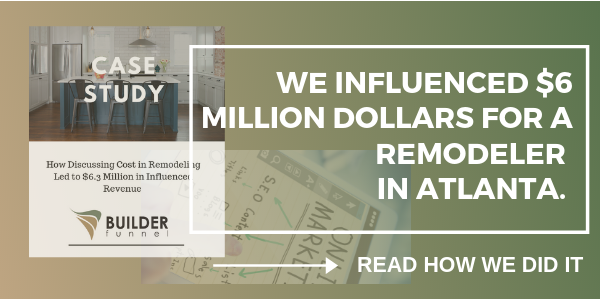2 min read
Bigger is Better: Why Content-Heavy Home Builder Websites Do Better
By: Wes Powell on Nov. 27, 2018

We are living in an age of information overload. Smartphones. Tablets. Laptops. It seems we are always connected. Even the websites we visit are busier, as content-heavy design is becoming the new standard for content marketing. And that’s good news for sites that use online portfolios to show off their work.
Worth the Added Effort
Regardless of the hurdles faced during the creation and development of sites rich with content, website owners continue to pile on more and more information. And the ever-increasing number of unique visitors shows that we can’t get enough of the stuff. The key to successful content marketing for content-heavy sites is abiding by established rules that will help you create a well-balanced, organized, clutter-free structure.
Benefits of Content-Heavy Sites
As a home builder, having a data-rich site is an ideal way to attract potential buyers. Here are some of the pros to building a site replete with quality content:
- Better search engine ranking. Content-heavy sites are a favorite of search engines such as Google. Bots rank data-rich sites higher than others; a higher ranking means more traffic, and that means more customers.
- A competitive edge. A well-crafted blog post that has been carefully cultivated to take advantage of SEO can often rank highly on search engines for months – even years – continually drawing in unique visitors.
- Content attracts potential customers. Having a content-heavy website with timely and relevant topics will always attract visitors. If you specialize in spa bathrooms, an evergreen blog post that features “5 Essentials for Your Bathroom Spa” would be a powerful pull for potential customers.
By promoting the same blog post on social media – Facebook, Pinterest, Twitter and Houzz – you’ll be making it even easier for people to find you. - Potential customers love portfolios. Showcasing a portfolio of successful builds is an ideal way to attract new customers; they’ll often surf the web, seeking out builders and what they’ve done previously. High-definition images of your homes, both inside and out, are crucial. Potential clients imagine themselves in the homes you have built or consider how you will build their dream home.
- Improved “curb appeal.” It isn’t just the homes you build that need curb appeal; your builder website will require the same attention to detail. By giving your site an elegant “wow” factor, you’re telling clients you’re the right builder for the job. Consider putting your portfolio right on your home page; you’ll save the buyer having to navigate your website to witness stunning examples of your expertise.
- Clean lines. Typically, content-heavy sites feature information in an easy grid layout to establish a visual hierarchy. The time-proven, conventional approach of using such a coherent structure saves the website from looking cluttered and overwhelming your visitor.
- Stay current. Once you’ve created your website and taken advantage of content marketing to populate your site with relevant and relatable posts, don’t forget about it! You may think that once the site is live, your work is done, but it’s really just beginning. Keep updating the site with new images of current projects to keep your visitors engaged.


